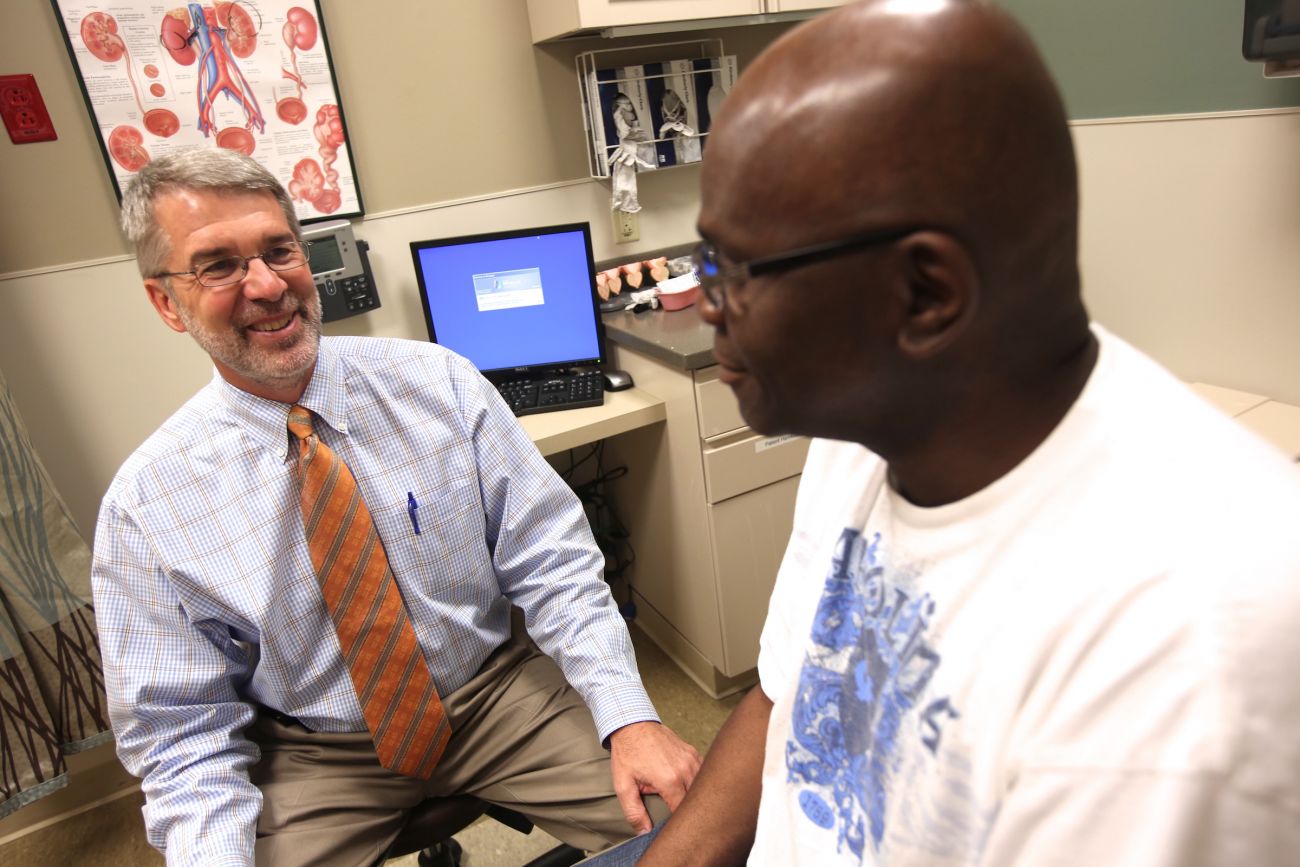For many people, a cancer diagnosis triggers a swift reaction:
“When they hear the word cancer, they want it out,” says James Mohler, MD, Department of Urology.
But most types of cancer don’t require a rush to treatment, and taking time to evaluate all the options carefully helps ensure that the best approach is put in place from the very start. Take prostate cancer, for example. About 70 percent of men receive their diagnosis when the disease is in its early stages. In most of those cases, the cancer tends to grow slowly and will never cause symptoms or lead to death.
Why not treat it anyway? The standard treatments — surgery to remove the prostate, and/or radiation treatment to eliminate the cancer — can cause significant side effects, especially erectile dysfunction (inability to get and sustain an erection) or urinary incontinence (inability to hold one’s urine). The younger a man is when he begins treatment, the longer he’ll have to live with those side effects.
Yet studies have shown that there is widespread overtreatment of low-risk prostate cancer in this country. In some cases, physicians ignore the option of active surveillance, or actively discourage their patients from making that choice.
Active Surveillance — What Is It?
What is active surveillance? It means monitoring the disease carefully instead of starting treatment right away. Men on active surveillance typically have blood tests every 6-12 months to monitor their prostate-specific antigen (PSA) levels, plus prostate exams every 12 months, and MRIs or biopsies if more information is needed.
During active surveillance, testing may show that a low-risk cancer has changed and is now aggressive. (This occurs in about one in three cases.) If that happens, the physician may recommend starting treatment. The decision will be based on several factors, including the stage of the disease, the man’s overall health and the number of years he can be expected to live based on his age and other factors.
Delay Does Not Mean Risk
Several studies have shown that where low-risk prostate cancers are concerned, a delay between diagnosis and treatment makes little if any difference in the cure rate. A study conducted at the University of California – San Francisco tracked 157 men who had surgery after a period of active surveillance, and found that the men had outcomes similar to those who underwent treatment immediately after diagnosis.
A larger study of 1,298 men conducted at Johns Hopkins University found that only 0.1% of men died of cancer and only 0.6% suffered metastasis 10 years after choosing active surveillance. The average time from diagnosis to treatment was 8.5 years, and only 50 percent of the men required treatment.
“It appears very safe to delay treatment for two years or more while you and your urologist determine if your prostate cancer seems capable of growth,” says Dr. Mohler.
Dr. Mohler is a past chair of the Prostate Cancer Panel of the National Comprehensive Cancer Network (NCCN), a nonprofit organization of 27 elite cancer centers whose members continually review the latest scientific evidence and use that information to update guidelines for physicians to use in the diagnosis and treatment of cancer. In 2009 the NCCN “came out and said that almost all men with low-risk or very-low-risk prostate cancer should be offered active surveillance,” Mohler says, “and that in many cases, it should be the only treatment recommended.”
Active surveillance is not recommended for men with aggressive prostate cancer, but for those who have low- or very-low-risk disease as defined by the NCCN, careful monitoring can be a welcome and reasonable alternative to treatment.
If you have been told you have prostate cancer, Dr. Mohler advises:
- Get a second opinion from a physician who is unbiased — someone who does not have a financial incentive for recommending a specific treatment.
- Find a urologic oncologist who is familiar with current studies about the pros and cons of active surveillance so that this option can be presented to you in a fair and balanced way.


